Discover 20 hidden attractions, cool sights, and unusual things to do in Ulm (Germany). Don't miss out on these must-see attractions: Ulm Minster, Stadthaus Ulm, and Arena Ulm/Neu-Ulm. Also, be sure to include Theater Ulm in your itinerary.
Below, you can find the list of the most amazing places you should visit in Ulm (Baden-Württemberg).
Table of Contents
Ulm Minster
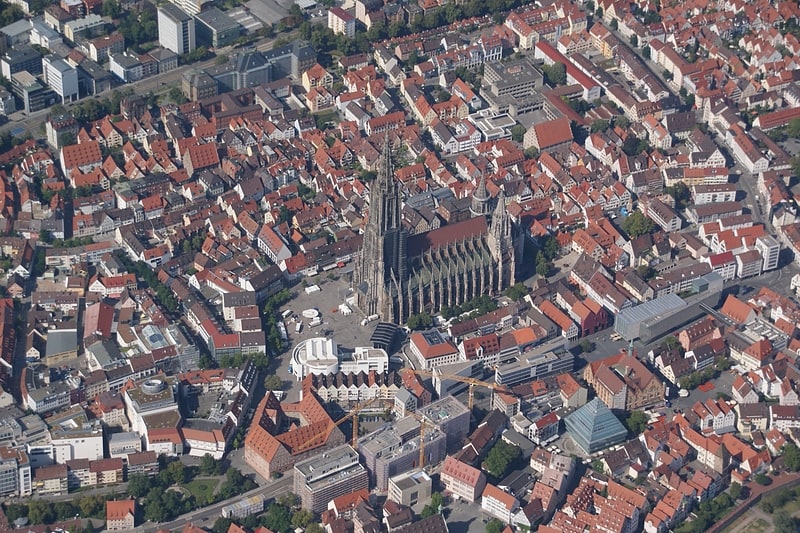
Also known as: Ulmer Münster
19th-century church, the world's tallest. Ulm Minster is a Lutheran church located in Ulm, State of Baden-Württemberg. It is currently the tallest church in the world and will likely remain so until the eventual completion of Sagrada Familia in Barcelona. The church is the fifth-tallest structure built before the 20th century, with a steeple measuring 161.5 metres.
Though it is sometimes referred to as Ulm Cathedral because of its great size, the church is not a cathedral as it has never been the episcopal see of a bishop. Though the towers and all decorative elements are of stone masonry, attracting the attention of visitors, most of the walls, including the façades of the nave and choir, actually consist of visible brick. Therefore, the building is sometimes referred to as a brick church. As such, it lays claim to the rank of second- to fourth-largest, after San Petronio Basilica in Bologna and together with Frauenkirche in Munich and St. Mary's Church in Gdańsk. The tower however was mainly built from sandstone.
Ulm Minster was begun in the Gothic architecture of the Late Middle Ages but the building was not completed until the late 19th century after a hiatus of centuries. When work ceased in the 16th century all of the church except the towers and some outer decorations were complete, unlike at Cologne Cathedral, where less than half of the work had been done before construction halted in the 15th century.
Visitors can climb the 768 steps that lead to the top of the minster's spire. At 143 m (469 ft) it gives a panoramic view of Ulm in Baden-Württemberg and Neu-Ulm in Bavaria and, in clear weather, a vista of the Alps from Säntis to the Zugspitze. The final stairwell to the top (known as the third Gallery) is a tall, spiralling staircase that has barely enough room for one person.[1]
Address: Münsterplatz 21, 89073 Ulm
Stadthaus Ulm
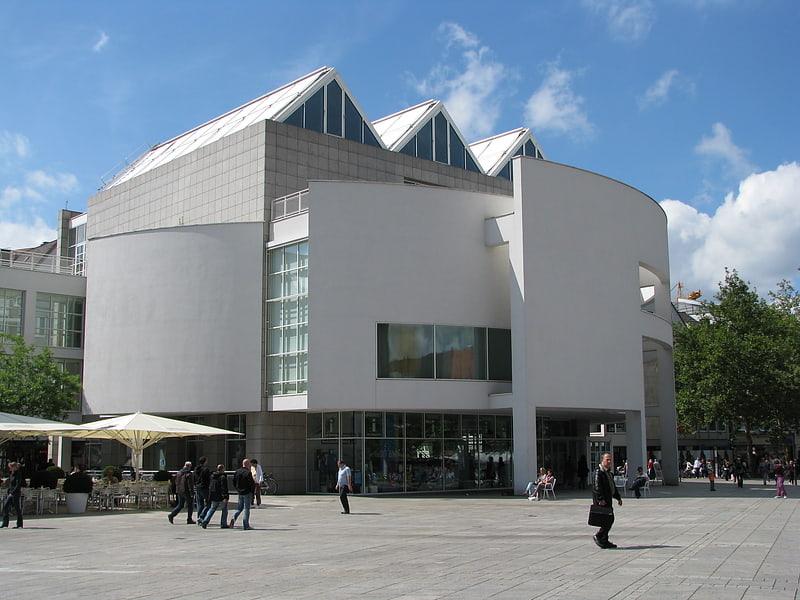
Event venue in Ulm, Germany. The Stadthaus Ulm is in the centre of Ulm, located on the Münsterplatz. Primarily, the building is used to present exhibitions of photography, modern and contemporary art. A lecture hall is used for a variety of events, activities and workshops, including a festival of modern music. It houses the city's Tourist information centre and other public services on the ground floor. A permanent exhibition of the archaeology and history of the Münsterplatz is located on the lower level.
The Stadthaus was designed by the US architect Richard Meier, who attempted to complement and contrast the Gothic architecture of Ulm Minster (German: Ulmer Münster).[2]
Address: Münsterplatz 50, 89073 Ulm
Arena Ulm/Neu-Ulm
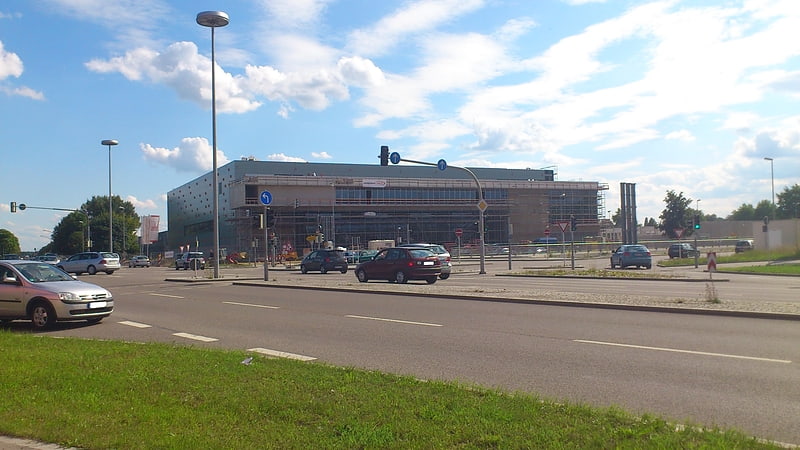
Also known as: Ratiopharm-Arena
Arena in Neu-Ulm, Germany. The Arena Ulm/Neu-Ulm, known for sponsorship reasons as Ratiopharm Arena, is an indoor arena in Neu-Ulm. It is the home arena of the basketball club Ratiopharm Ulm, and provides a seating capacity of 6,100 for basketball games. The result of a cooperation between the cities of Neu-Ulm and Ulm, the arena was opened in December 2011, and also hosts concerts and other events.[3]
Address: Europastr. 25, 89231 Ulm
Theater Ulm
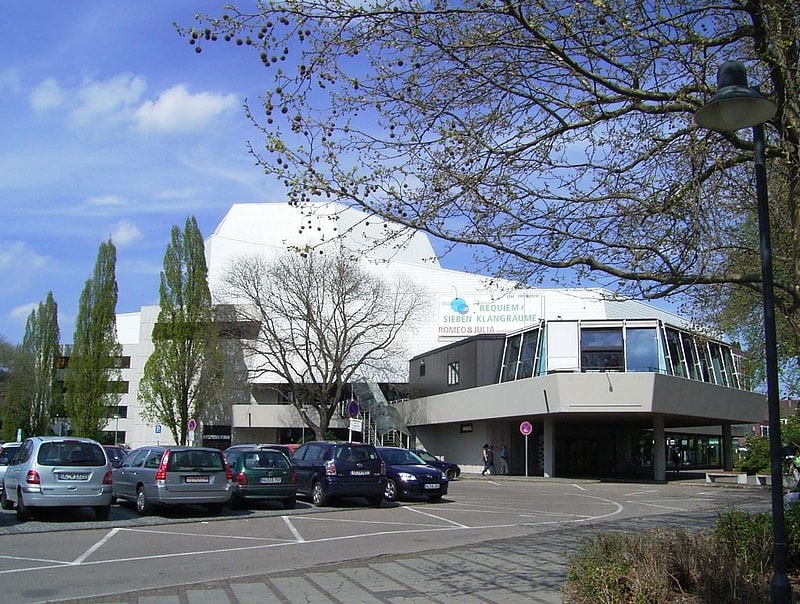
Theater in Ulm, Germany. Theater Ulm is the municipal theater in the Baden-Württemberg city of Ulm in Germany. Founded in 1641, it is the oldest municipal theater in Germany. Today, it operates distinct ensembles for opera/operetta, acting, and ballet. Until 2006, it operated as Ulmer Theater.
The current building, at Herbert-von-Karajan-Platz 1, was built from 1966 to 1969, based on plans by Fritz Schäfer. It was opened on 3 October 1969.[4]
Address: Ulm, Herbert-von-Karajan-Platz 1
Theater Neu-Ulm
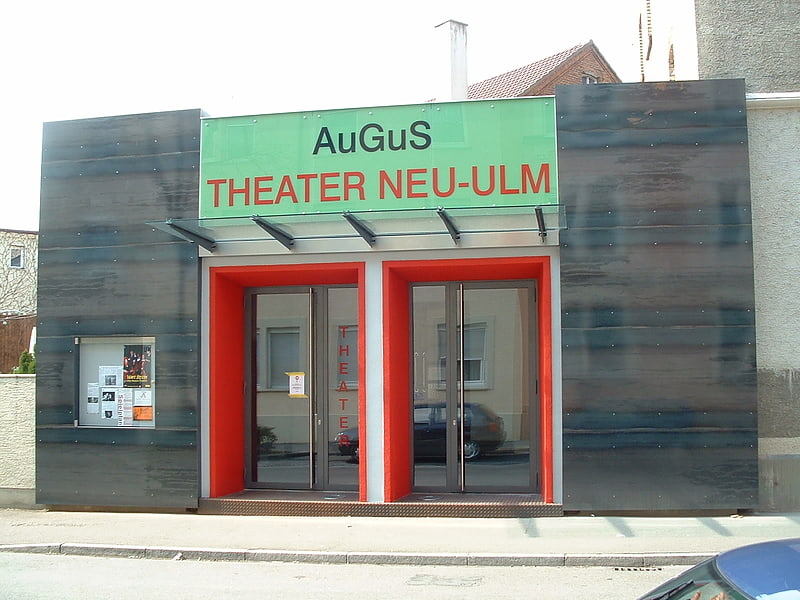
Theatre in Neu-Ulm, Germany. Theater Neu-Ulm is a theatre in Neu-Ulm, Bavaria, Germany.[5]
Address: Hermann-Köhl-Str. 3, 89231 Neu-Ulm
Botanischer Garten der Universität Ulm

Also known as: Botanischer Garten Ulm
Large botanical garden with greenhouses. The Botanischer Garten der Universität Ulm, also known as the Botanischer Garten Ulm, is a botanical garden and arboretum maintained by the University of Ulm. It is located at Hans-Krebs-Weg, Ulm, Baden-Württemberg, Germany.
The garden was begun in 1981 on a former shooting range southeast of the university on the Upper Eselsberg. Its first greenhouses were built in 1986, its arboretum created in the years 1992–1996, and two additional tropical greenhouses were added in 1997. A farmer's garden was created in 1998, a rose garden in 1999–2000, and in 2001 an herb garden was created in cooperation with the pharmaceutical company Ratiopharm.
Today the garden contains a medicinal garden, daylily garden, arboretum, pond, rose garden, cottage garden, and meadow. Its herbarium contains some 80,000 documents with a focus on Europe, South America, and Central America, including a tropical collection of about 50,000 specimens, about 20,000 specimens of mosses and lichens, and some 10,000 phanerogams. The garden is open to the public on weekdays at various hours.[6]
Address: Oberer Eselsberg 1, Ulm
Fischerviertel
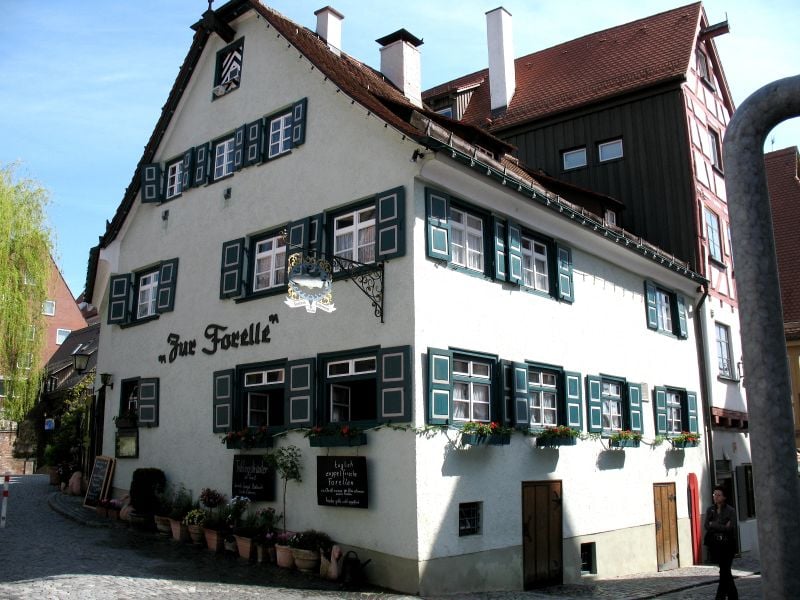
Neighbourhood
Wiblingen Monastery
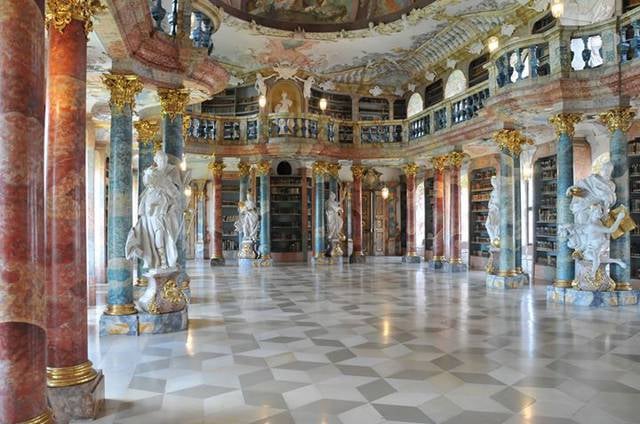
Museum, Monastery
Address: Schlossstr. 38, 89079 Ulm
EV6 The Rivers Route
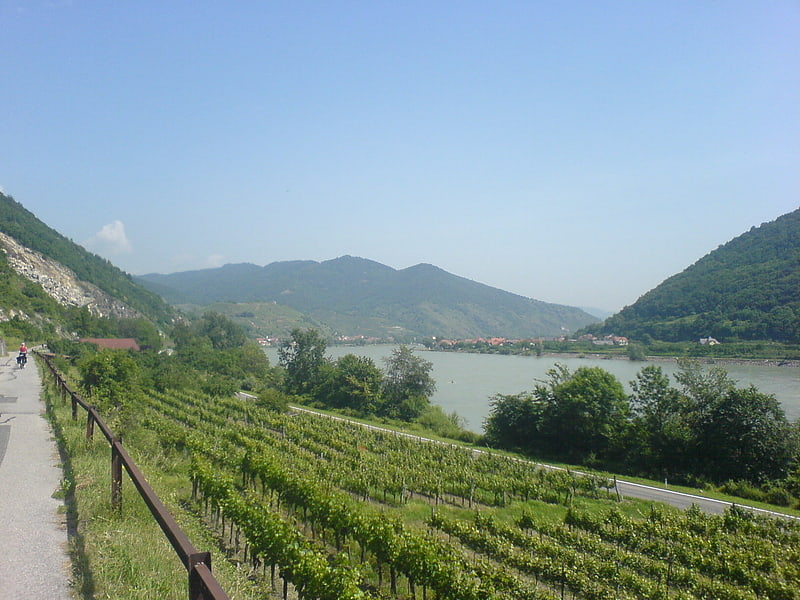
EuroVelo 6, named the "Rivers Route", is a EuroVelo long-distance cycling route that runs along 3,653 km some of Europe's major rivers, including much of the Loire, some of the Saône, a short section of the upper Rhine and almost the entire length of Europe’s second longest river, the Danube — from the Atlantic coast of France to the city of Constanța on the Black Sea.
The EV6 traverses ten countries, from the mouth of the Loire eastward along that river to the Saône, across the border to Switzerland, along the Rhine to Lake Constance, north into Germany, down the Danube and through Austria, Slovakia, Hungary, Serbia, Croatia, Bulgaria, and Romania to the Danube Delta, before terminating at Constanța on the Black Sea.
The EV6 includes the Danube Cycleway (de:Donauradweg), the most popular holiday cycle route in Europe. This section stretches from Donaueschingen to Passau in Germany, through Austria to Vienna, and continues on to Bratislava in Slovakia, to Novi Sad and Belgrade in Serbia, before continuing on towards the Danube Delta.[7]
Walther Collection
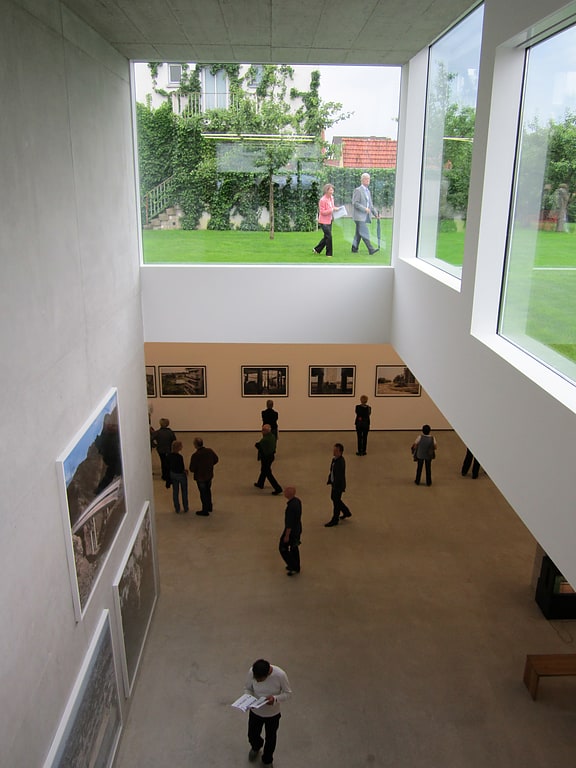
Non-profit organization. The Walther Collection is a private non-profit organization dedicated to researching, collecting, exhibiting, and publishing modern and contemporary photography and video art. The Collection has two exhibition spaces: the Walther Collection in Neu-Ulm/Burlafingen, in Germany, and the Walther Collection Project Space in 'New York City.[8]
Address: Reichenauer Str. 21, 89233 Neu-Ulm
Kunsthalle Weishaupt
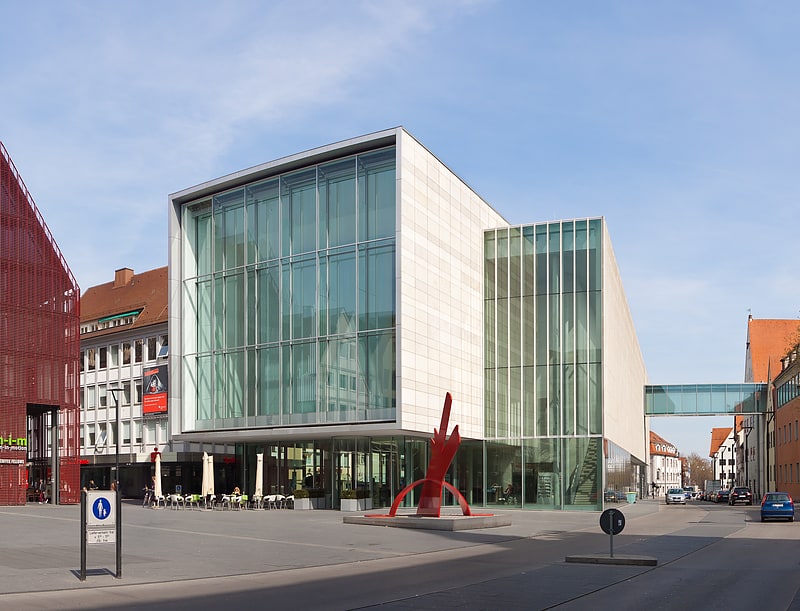
Art gallery in Ulm, Germany. Kunsthalle Weishaupt is an art gallery located in Ulm, in Baden-Würtemberg, Germany. It houses a private collection of modern art. The Kunsthalle Weishaupt was founded in 2007.[9]
Address: Hans-und-Sophie-Scholl-Platz 1, 89073 Ulm
Neu-Ulm
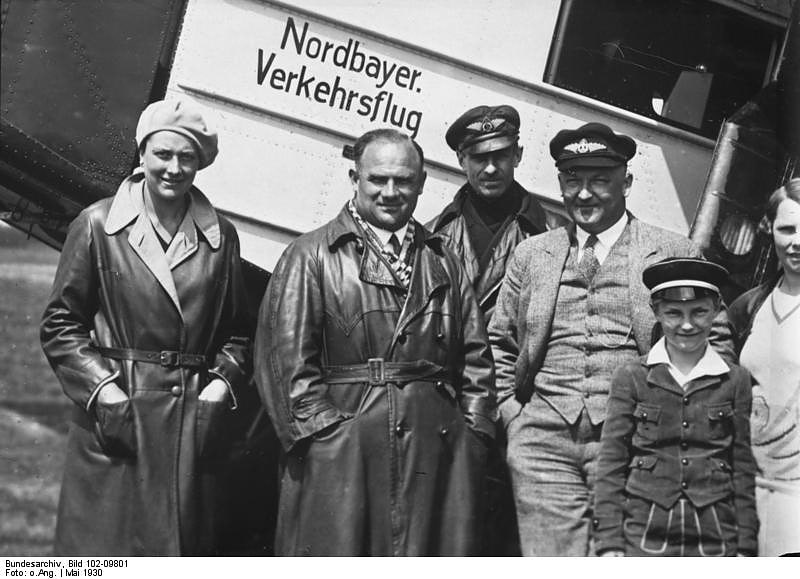
City in Germany. Neu-Ulm is the capital of the Neu-Ulm district and a town in Swabia, Bavaria. Neighbouring towns include Ulm, Senden, Pfaffenhofen an der Roth, Holzheim, Nersingen and Elchingen. The population is 58,978.[10]
Unterer Donauturm

Address: Valckenburgufer 25, Ulm
Schwörhaus
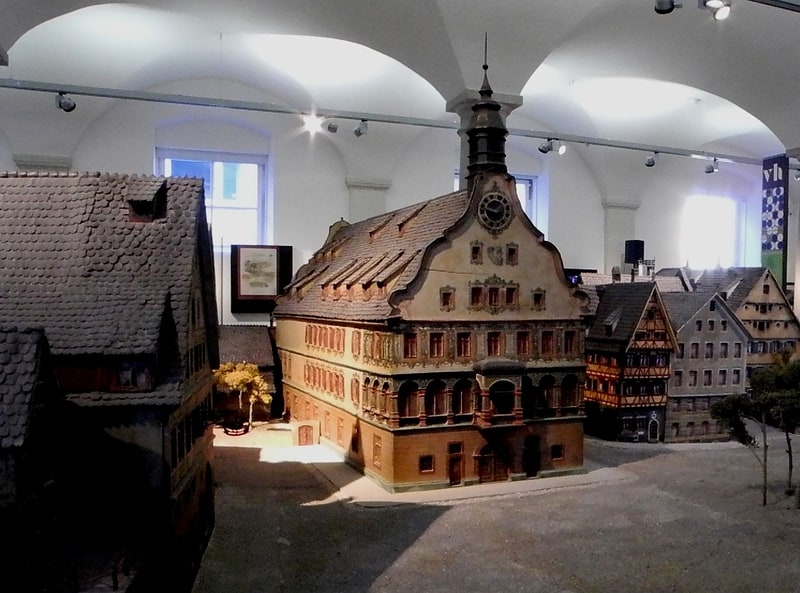
The Schwörhaus in Ulm is an imperial city representative building built at the beginning of the 17th century. After repeated destruction and reconstruction, it is now used as the House of Ulm City History by the Ulm City Archives. From its balcony, the mayor of Ulm gives an annual public account on Schwörmontag.
Address: Weinhof 12, 89073 Ulm
Tiergarten Ulm

The Ulm Zoo is a zoological institution of the city of Ulm. It was founded in 1935, closed in 1944, and reopened in 1966.
Address: Friedrichsau 40, 89073 Ulm
Ulmer Museum
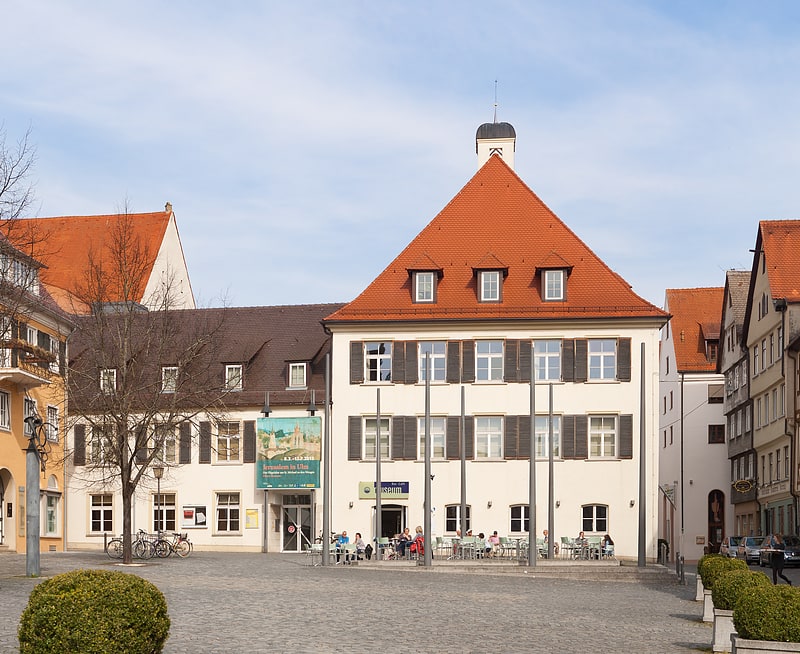
Museum in Ulm, Germany. The Museum Ulm, founded in 1924, is a museum for art, archeology, urban and cultural history in Ulm, Germany.
Exhibits range from prehistoric and early archaeological finds of the Ulm region (including the lion-man statuette) to Late (International) Gothic and Renaissance paintings and sculptures made in Ulm and Upper Swabia. Collections of 16th- to 19th-century artisan works by Ulm's handicraft guilds are also presented. Conservator and university professor Julius Baum became the museum’s founding director and its first art historian on 1 April 1924. According to his successor Erwin Treu, "this started the real history" as "an institute emerged from a junk room".[11]
Albert-Einstein-Denkmal
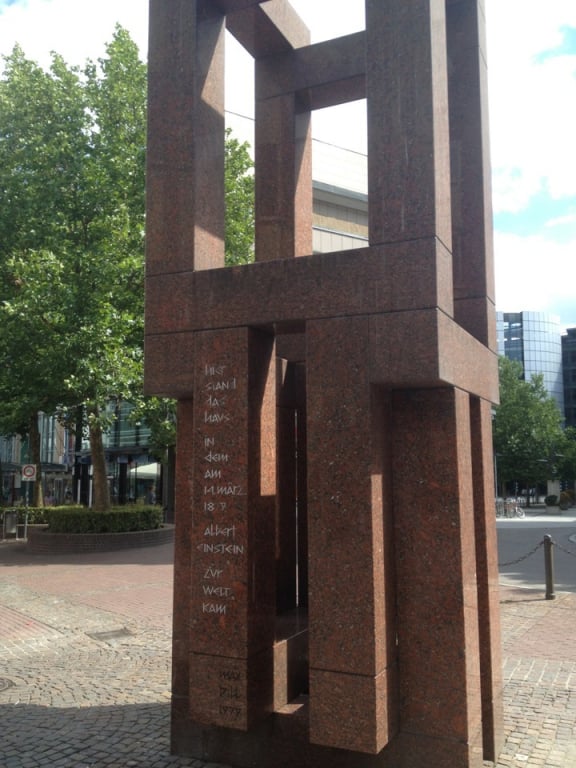
Monuments and statues
Address: Bahnhofstr. 20, 89073 Ulm
Museum der Brotkultur
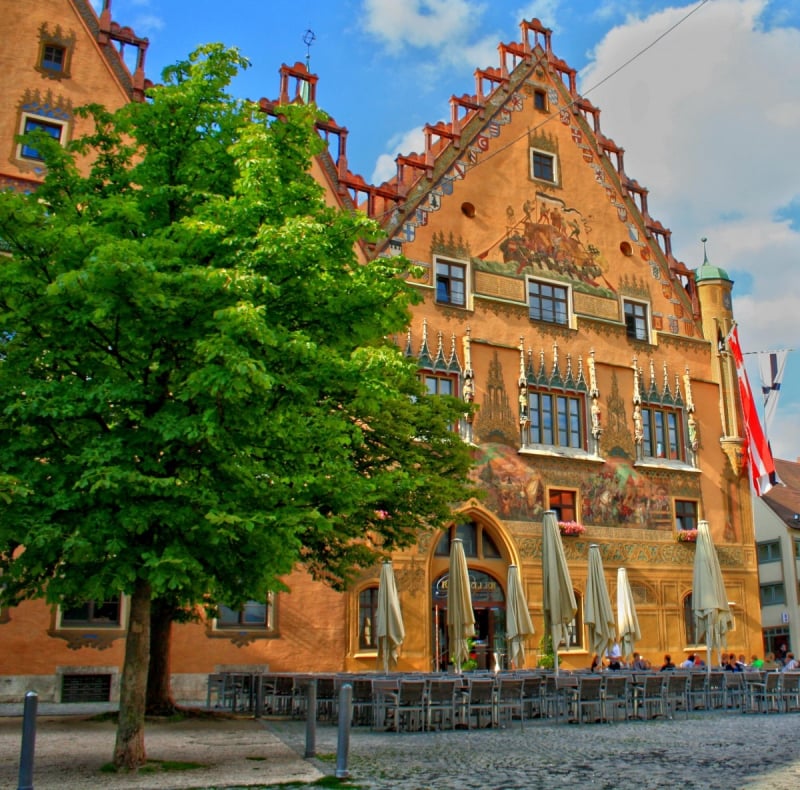
The Museum Brot und Kunst - Forum Welternährung (Bread and Art - Forum World Food) is a knowledge museum in Ulm that comprehensively presents the significance of grain, bread and culture for the development of mankind. This includes natural, technical and social historical aspects of bread production as well as the understanding of bread as a symbol of life in the Judeo-Christian imagination. Special emphasis is placed on the discussion of the lack of bread and food in history and the present. High-ranking works of art from the 15th to the 21st century show how deeply and multilayered the motif of bread or grain is anchored in our culture.
Address: Salzstadelgasse 10, 89073 Ulm
Haus der Begegnung
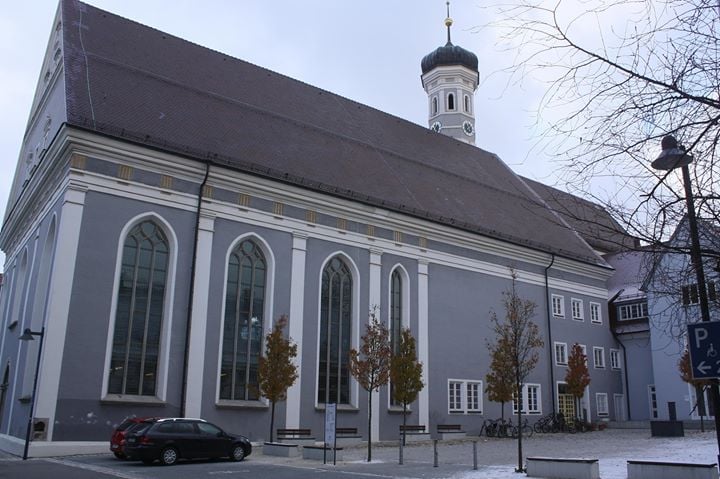
Church
Address: Adlerbastei 3, 89073 Ulm
Donauschwäbisches Zentralmuseum
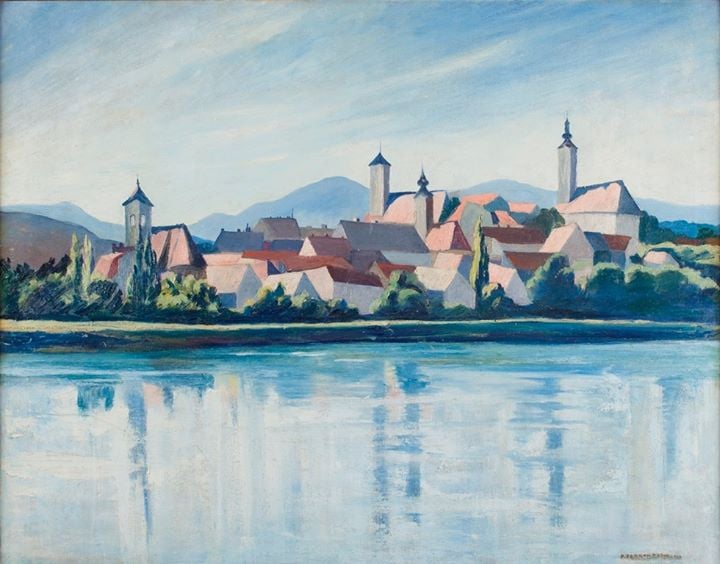
Museum, Specialty museum, Science museum, History museum
Address: Schillerstraße 1, 89077 Ulm